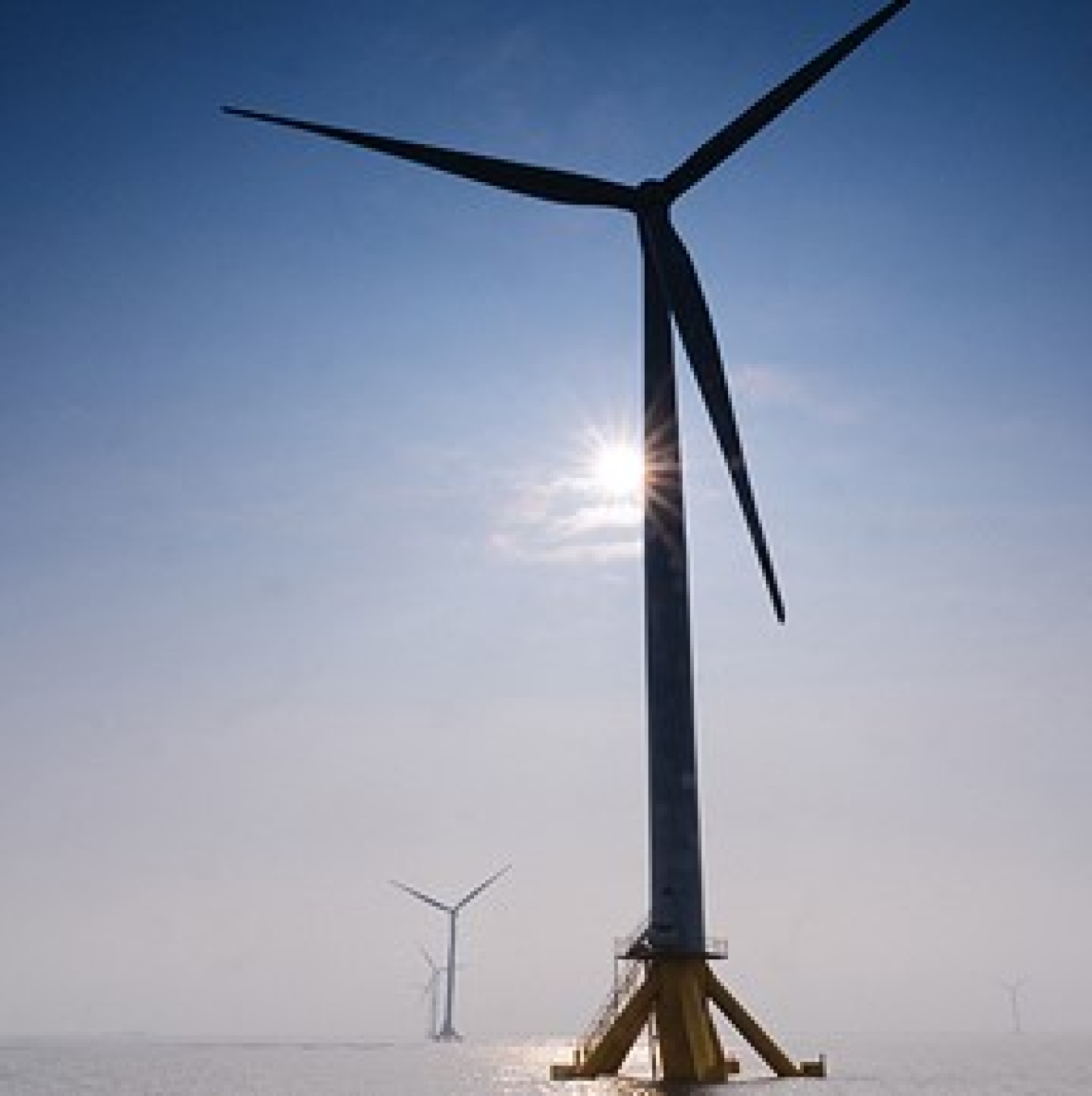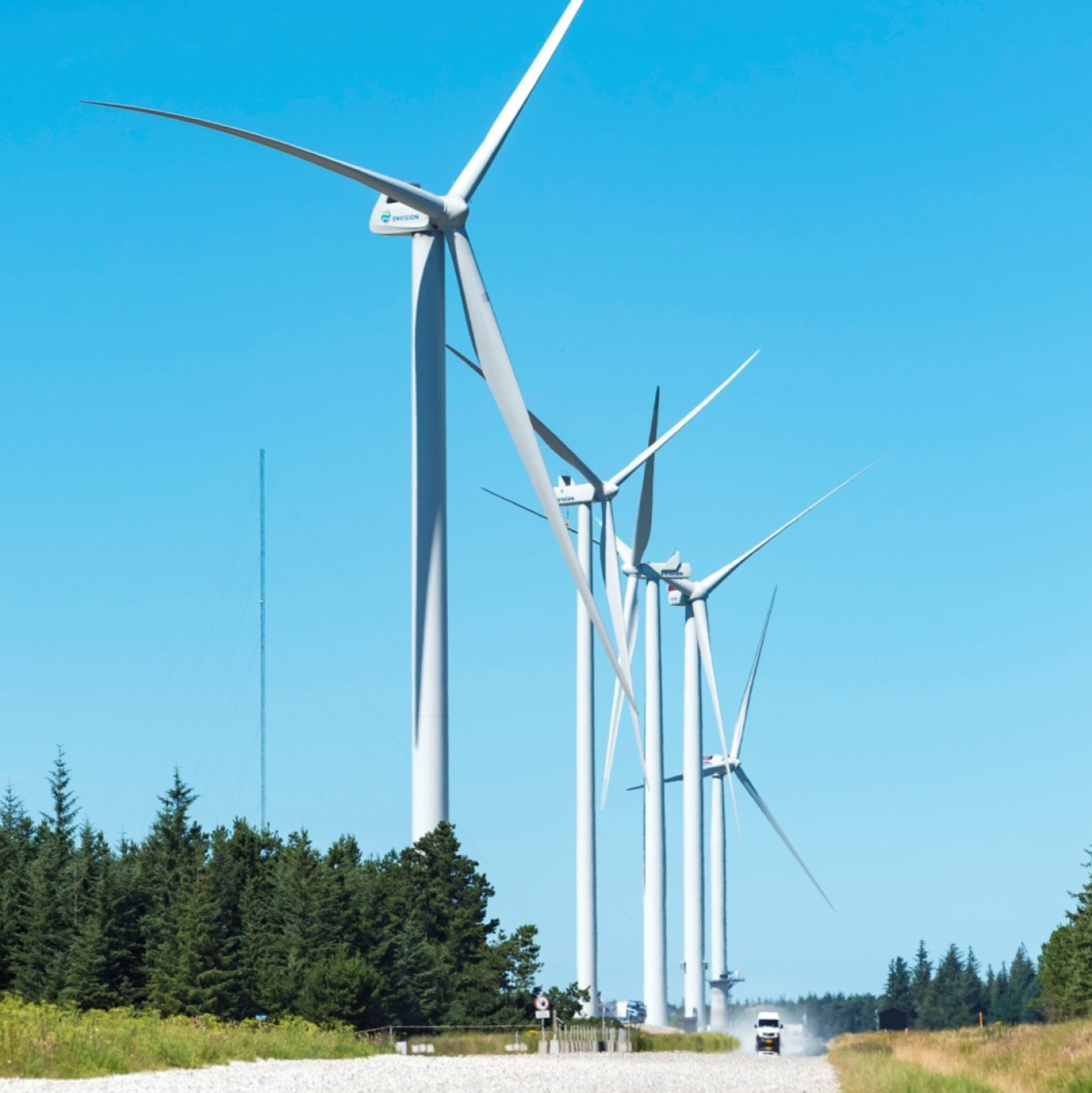The biannual U.S. Department of Energy (DOE) Wind Research and Development (R&D) Newsletter provides recent news about the DOE Wind Energy Technologies Office's R&D projects, news, accomplishments, and recent publications.
Current Research & Development
Experts Predict 50% Lower Wind Costs Than They Did in 2015
Study shows expected cost declines of 37%–49% by 2050
Technology and commercial advancements are expected to continue to drive down the cost of wind energy, according to a survey of the world’s foremost wind power experts led by Lawrence Berkeley National Laboratory (Berkeley Lab). Experts anticipate cost reductions of 17%–35% by 2035 and 37%–49% by 2050 under a median or best-guess scenario, driven by bigger and more efficient wind turbines, lower capital and operating costs, and other advancements. The findings are described in an article in Nature Energy, with further details on the Berkeley Lab website.
Following a similar effort in 2015, the study summarizes a global survey of 140 wind energy experts. It uncovers insights on the possible magnitude of and drivers for cost reductions, anticipated technology trends, and grid-system value-enhancement measures. It focuses on three wind applications: onshore (land-based), fixed-bottom offshore, and floating offshore.
Wind Repowering Helps Set the Stage for Energy Transition
Research findings highlight motivations behind wind power’s second act
Wind energy is already a major contributor to the U.S. energy system (9.2% of all electricity in 2020) and is expected to become even more so in the future. Boosted by advancing technology, economies of scale, and plummeting costs, the U.S. industry had an exceptional year in 2020, with wind power capacity additions of 14.2 gigawatts (GW).
Although new wind power plant plans and installations dominate headlines, wind repowering—the combined activity of dismantling or refurbishing existing wind turbines and commissioning new ones—also plays an important role in the industry. By modernizing the existing wind fleet, repowering sets the stage for future wind industry investments and helps maximize wind energy use in the coming energy transition.
Recognizing this potential, several members from the International Energy Agency Wind (IEA Wind) Technology Collaboration Programme Task 26—led by NREL, with funding from WETO—published an article in Nature Energy that explores the drivers influencing onshore wind energy repowering decisions.
-
 Using funding from DOE’s Competitiveness Improvement Project (CIP), Intergrid LLC has introduced the first inverter developed specifically for small- and medium-scale wind turbines.
Using funding from DOE’s Competitiveness Improvement Project (CIP), Intergrid LLC has introduced the first inverter developed specifically for small- and medium-scale wind turbines. -
Interconnections Seam Study explores benefits and costs of enhanced transmission across U.S. electric grid.
-
 Innovative technology mitigates the negative impacts of offshore wind energy development on this endangered species.
Innovative technology mitigates the negative impacts of offshore wind energy development on this endangered species. -
 Natural Power has developed the first-ever smart curtailment technology that simultaneously reduces bat fatalities and energy losses at wind farms.
Natural Power has developed the first-ever smart curtailment technology that simultaneously reduces bat fatalities and energy losses at wind farms. -
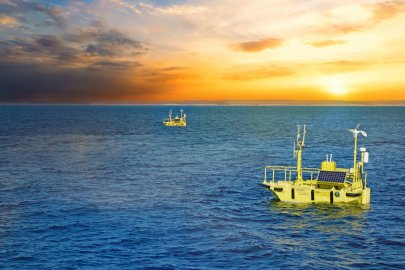 As part of DOE’s A2e initiative, wind energy scientists share data and provide information to wind power plant owners and consultants who need to make informed decisions on types of technologies to be deployed and where to locate wind turbines.
As part of DOE’s A2e initiative, wind energy scientists share data and provide information to wind power plant owners and consultants who need to make informed decisions on types of technologies to be deployed and where to locate wind turbines. -
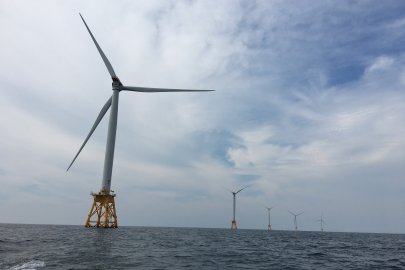 Offshore wind turbines can interfere with radar systems used for air traffic control, weather forecasting, and homeland security. To understand potential impacts, the Wind Turbine Radar-Interference Mitigation Working Group hosted a series of webinars.
Offshore wind turbines can interfere with radar systems used for air traffic control, weather forecasting, and homeland security. To understand potential impacts, the Wind Turbine Radar-Interference Mitigation Working Group hosted a series of webinars. -
 Using, reusing, recycling, and remanufacturing wind turbine materials—combined with technology engineered to use fewer materials and resources—will produce components that can easily be broken down for use in other applications.
Using, reusing, recycling, and remanufacturing wind turbine materials—combined with technology engineered to use fewer materials and resources—will produce components that can easily be broken down for use in other applications.
Letter from the Wind Energy Technologies Office Director, Dr. Robert C. Marlay
Our spring newsletter is an opportunity to look both backward and forward—at wind energy research and development (R&D) accomplishments from the previous year and at the U.S. Department of Energy’s plans for advancing wind energy in the future. With new national plans to address climate change, build a 100% clean energy economy, and reach net-zero emissions no later than 2050, wind is expected to play an increasingly important role in America’s energy future.
-
 We need to revolutionize how we generate and use electricity, by making renewable energy sources like wind and solar more abundant, more affordable, and more accessible to everyone. See what we're doing about it.
We need to revolutionize how we generate and use electricity, by making renewable energy sources like wind and solar more abundant, more affordable, and more accessible to everyone. See what we're doing about it. -
A review of historical trends shows the progress the power sector has already made in reducing emissions.
-
 National offshore wind goal will support 77,000 jobs, power 10 million homes, and cut 78 million metric tons in carbon emissions.
National offshore wind goal will support 77,000 jobs, power 10 million homes, and cut 78 million metric tons in carbon emissions. -
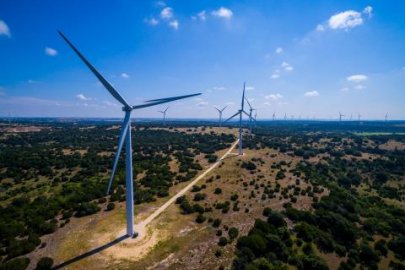 Study indicates wind projects led to substantial increases in revenue and expenditures, boosting capital spending, improving or expanding education facilities and features that were beneficial to students, teachers, and communities.
Study indicates wind projects led to substantial increases in revenue and expenditures, boosting capital spending, improving or expanding education facilities and features that were beneficial to students, teachers, and communities. -
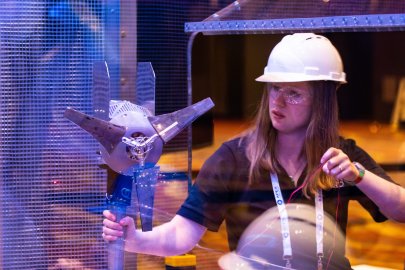 This June, 13 teams of college students from across the United States will showcase their wind energy achievements at the 2021 CWC.
This June, 13 teams of college students from across the United States will showcase their wind energy achievements at the 2021 CWC. -
 DOE announces 11 teams selected to compete in the 2022 Collegiate wind competition, where students will design, build, and test a model wind turbine.
DOE announces 11 teams selected to compete in the 2022 Collegiate wind competition, where students will design, build, and test a model wind turbine. -
 WETO organized the Distributed Wind Research Program Workshop to bring together laboratory and industry project stakeholders to achieve key objectives.
WETO organized the Distributed Wind Research Program Workshop to bring together laboratory and industry project stakeholders to achieve key objectives. -
 WISDEM software creates a virtual, vertically integrated wind plant from components to operations.
WISDEM software creates a virtual, vertically integrated wind plant from components to operations. -
 Maps provide easy-to-understand snapshots of wind resources.
Maps provide easy-to-understand snapshots of wind resources. -
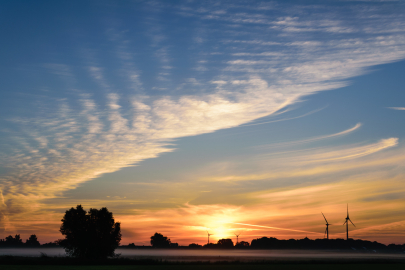 The plan outlines WETO's research priorities and plans through the year 2025.
The plan outlines WETO's research priorities and plans through the year 2025.
Funding News
-
 EERE’s Acting Assistant Secretary and the Deputy Assistant Secretaries for EERE’s three technology pillars—Energy Efficiency, Renewable Power, and Sustainable Transportation—and Operations will host a FY22 budget webinar on Thursday, June 3, at 2pm ET.
EERE’s Acting Assistant Secretary and the Deputy Assistant Secretaries for EERE’s three technology pillars—Energy Efficiency, Renewable Power, and Sustainable Transportation—and Operations will host a FY22 budget webinar on Thursday, June 3, at 2pm ET. -
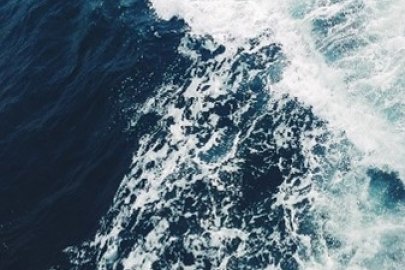 DOE and the Department of the Interior have entered into a cooperative agreement with Texas A&M Engineering Experiment Station to support the ongoing operation and maintenance of the Ocean Energy Safety Institute.
DOE and the Department of the Interior have entered into a cooperative agreement with Texas A&M Engineering Experiment Station to support the ongoing operation and maintenance of the Ocean Energy Safety Institute. -
Five new research projects focus on Enabling Large-Scale Turbines.
-
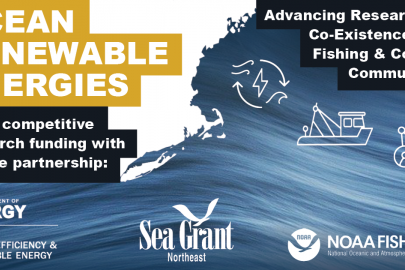 Advancing social science and technology research for a sustainable ocean economy
Advancing social science and technology research for a sustainable ocean economy -
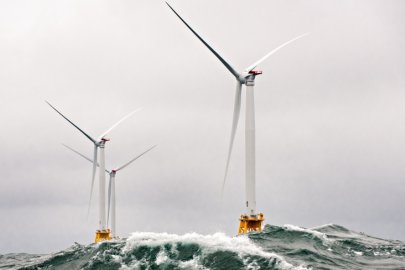 Fifteen new projects were selected to receive a total of $8 million for offshore wind support structure innovation, U.S.-based supply chain development, electrical systems innovation, and solutions for impacts on wildlife and radar.
Fifteen new projects were selected to receive a total of $8 million for offshore wind support structure innovation, U.S.-based supply chain development, electrical systems innovation, and solutions for impacts on wildlife and radar. -
 GE to receive $20.3 million to build and test a prototype of their high-efficiency, ultra-light, low-temperature SCG on a wind turbine.
GE to receive $20.3 million to build and test a prototype of their high-efficiency, ultra-light, low-temperature SCG on a wind turbine. -
 Environmental research supports increasing understanding of offshore wind and evaluating impacts on wildlife in U.S. Atlantic waters.
Environmental research supports increasing understanding of offshore wind and evaluating impacts on wildlife in U.S. Atlantic waters. -
 Innovative projects support improving the ability to forecast wind power; demonstrating energy production technologies to reduce cost of offshore wind
Innovative projects support improving the ability to forecast wind power; demonstrating energy production technologies to reduce cost of offshore wind
Featured Publications
The following is a curated list of recent or high-profile publications from WETO and DOE national laboratories. Visit the Office of Energy Efficiency and Renewable Energy’s Wind Technology Resource Center for research reports, publications, data sets, and online tools developed by national laboratories and their facilities.
- Analytical Solution for the Cumulative Wake of Wind Turbines in Wind Farms
- Lidar Measurements of Yawed-Wind-Turbine Wakes: Characterization and Validation of Analytical Models
- Rapidly Recovering Wind Turbine Wakes with Dynamic Pitch and Rotor Speed Control
- A Model to Calculate Fatigue Damage Caused by Partial Waking During Wind Farm Optimization(preprint)
- FAST.Farm Development and Validation of Structural Load Prediction Against Large Eddy Simulations
- FAST.Farm User’s Guide and Theory Manual
- Changing the Rotational Direction of a Wind Turbine under Veering Inflow: A Parameter Study
- Computation and Comparison of the Stable Northeastern US Marine Boundary Layer
- Mountain Waves Can Impact Wind Power Generation
- Validating Simulated Mountain Wave Impacts on Hub-Height Wind Speed Using SoDAR Observations
- Observations and Simulations of a Wind Farm Modifying a Thunderstorm Outflow Boundary
- Operational-Based Annual Energy Production Uncertainty: Are Its Components Actually Uncorrelated?
- Does the Rotational Direction of a Wind Turbine Impact the Wake in a Stably Stratified Atmospheric Boundary Layer?
- Wake Steering of Multirotor Wind Turbines
- Quantification of Rotor Thrust and Momentum Deficit Evolution in the Wake Using Nalu-Wind Simulations
- Remote-Sensing and Radiosonde Datasets Collected in the San Luis Valley During the LAPSE-RATE Campaign
- Wind Turbine Wake Characterization Using the SpinnerLidar Measurements
- Representation of Coherent Structures and Turbulence Spectra from a Virtual SpinnerLidar for Future LES Wake Validation
- The Importance of Weather and Climate to Energy Systems: A Workshop on Next Generation Challenges in Energy-Climate Modeling
- Halfway to Zero: Progress towards a Carbon-Free Power Sector
- Expert Elicitation Survey Predicts 37% to 49% Declines in Wind Energy Costs by 2050
- Toward Global Comparability in Renewable Energy Procurement
- Cleaning the Grid
- School District Revenue Shocks, Resource Allocations, and Student Achievement: Evidence from the Universe of U.S. Wind Energy Installations
- Multifaceted Drivers for Onshore Wind Energy Repowering and Their Implications for Energy Transition
- Multifaceted Political and Social Drivers Inform Wind Energy Repowering Decisions and Potential
- Wind Power Costs Driven by Innovation and Experience with Further Reductions on the Horizon
- Workforce and Economic Development Considerations from the Operations and Maintenance of Wind Power Plants
- An Overview of Wind-Energy-Production Prediction Bias, Losses, and Uncertainties
- Feasibility of Ocean-Based Renewable Energy in the Gulf of Mexico
- 2019 Cost of Wind Energy Review
- The Impact of Wind, Solar, and Other Factors on the Decline in Wholesale Power Prices in the United States
- Competitiveness Improvement Project (fact sheet)
- Microgrids, Infrastructure Resilience, and Advanced Controls Launchpad (MIRACL) Fact Sheet (fact sheet)
- Microgrids, Infrastructure Resilience, and Advanced Controls Launchpad (MIRACL) Research: Controls (fact sheet)
- Distributed Wind Controls: A Research Roadmap for Microgrids, Infrastructure Resilience, and Advanced Controls Launchpad (MIRACL)
- Microgrids, Infrastructure Resilience, and Advanced Controls Launchpad (MIRACL): Use Cases and Definitions
- The Value of Distributed Wind: A Valuation Framework
- Technology Innovation Pathways for Distributed Wind Balance-of-System Cost Reduction
- Bias Characterization, Vertical Interpolation, and Horizontal Interpolation for Distributed Wind Siting Using Mesoscale Wind Resource Estimates
- Distributed Wind Considerations From the IEEE 1547-2018 [Grid Support] Revision
- A Simple Method for Modelling Fatigue Spectra of Small Wind Turbine Blades
- Multi-Agent Safe Policy Learning for Power Management of Networked Microgrids
- Nonlinear Multiple Models Adaptive Secondary Voltage Control of Microgrids
- Enabling Renewable Energy While Protecting Wildlife: An Ecological Risk-Based Approach to Wind Energy Development Using Ecosystem-Based Management Values
- Wind and Wildlife Co-Exist With Help From ECO Wind(fact sheet)
- Behavioral Patterns of Bats at a Wind Turbine Confirm Seasonality of Fatality Risk
- Proceedings from the State of the Science and Technology for Minimizing Impacts to Bats from Wind Energy
- Acoustic and Genetic Approaches for Informing Population Status and Trends of Migratory Tree Bats
- An Investigation into the Potential for Wind Turbines to Cause Barotrauma in Bats
- Ultrasonic Acoustic Deterrents Significantly Reduce Bat Fatalities at Wind Turbines
- A Heterogeneous System for Eagle Detection, Deterrent, and Wildlife Collision Detection for Wind Turbines
- Sensor System and Signal Processing for Automated Blade Collision Detection on Wind Turbines
- Wind Turbine Event Detection by Support Vector Machine
- The Value of Increased HVDC Capacity Between Eastern and Western U.S. Grids: The Interconnections Seam Study(preprint)
- A Systematic Evaluation of Wind’s Capacity Credit in the Western United States
- An Evaluation of Electricity System Technology Competitiveness Metrics: The Case for Profitability
- Competitiveness Metrics for Electricity System Technologies
- Distributed ADMM Using Private Blockchain for Power Flow Optimization in Distribution Network With Coupled and Mixed-Integer Constraints
- Flexing the Limits of Land-Based Wind Turbine Rotor Growth
- Investigation of Main Bearing Operating Conditions in a Three-Point Mount Wind Turbine Drivetrain
- NREL’s Wind Turbine Drivetrain Condition Monitoring and Wind Plant Operation and Maintenance Research During the 2010s: A US Land-Based Perspective
- Investigation of Flutter for Large, Highly Flexible Wind Turbine Blades
- Biden Administration Jumpstarts Offshore Wind Energy Projects to Create Jobs(White House fact sheet)
- How Many Offshore Wind Turbines Does New England Need?
- Spatial Impacts of Technological Innovations on the Levelized Cost of Energy for Offshore Wind Power Plants in the United States
- Floating Platform Effects on Power Generation in Spar and Semisubmersible Wind Turbines
- The Cost of Floating Offshore Wind Energy Using New England Aqua Ventus Concrete Semisubmersible Technology
- Optimization-Based Calibration of Hydrodynamic Drag Coefficients for a Semisubmersible Platform Using Experimental Data of an Irregular Sea State
- Uncertainty Assessment of CFD Investigation of the Nonlinear Difference-Frequency Wave Loads on a Semisubmersible FOWT Platform
- 2019 Offshore Wind Technology Data Update
- 2020 Offshore Wind Resource Assessment for the California Pacific Outer Continental Shelf
- Validation of Reanalysis-Based Offshore Wind Resource Characterization Using Lidar Buoy Observations
- Best Practices for the Validation of U.S. Offshore Wind Resource Models
- New Methods to Improve the Vertical Extrapolation of Near-Surface Offshore Wind Speeds(preprint)
- Quantifying Sensitivity in Numerical Weather Prediction-Modeled Offshore Wind Speeds Through an Ensemble Modeling Approach
- Improved Prediction of Cold-Air Pools in the Weather Research and Forecasting Model Using a Truly Horizontal Diffusion Scheme for Potential Temperature
- Wind Ramp Events Validation in NWP Forecast Models during the Second Wind Forecast Improvement Project (WFIP2) Using the Ramp Tool and Metric (RT&M)
- Wind Turbine Radar Interference Mitigation Working Group Introduction: Webinar and Presentation Slides
- Wind Turbine Radar Interference Mitigation(fact sheet)
Subscribe to the WETO e-newsletter to stay informed on the latest wind energy news, events, publications, and updates.
Subscribe to the WETO e-newsletter to stay informed on the latest wind energy news, events, publications, and updates.


